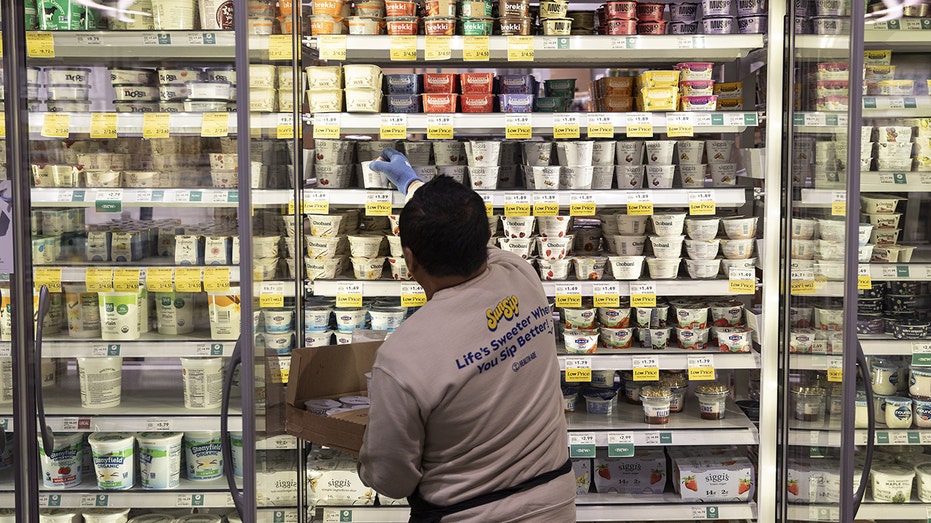Fed's favorite inflation gauge rises faster than expected in March
Labor Department releases closely watched inflation data
Inflation has been much stickier than expected, analyst says
Market Rebellion co-founder Pete Najarian discusses delayed rate cuts by the Fed, inflation and U.S. markets.
An inflation measure closely watched by the Federal Reserve rose faster than expected in March as high prices continue to weigh on millions of Americans.
The personal consumption expenditures index showed that consumer prices rose 0.3% from the previous month, according to the Labor Department, in line with expectations. On an annual basis, prices climbed 2.7% — higher than both the 2.6% forecast from LSEG economists and the 2.5% reading recorded the previous month.
In another sign that progress on inflation is stalling, core prices — which strip out the more volatile measurements of food and energy — climbed 0.3% from the previous month and 2.8% from the previous year. Those figures are both higher than what was seen the previous month.
"Progress on inflation certainly appears stalled. Prices grew in March at the same relative pace as in February," said Elizabeth Renter, data analyst at NerdWallet. "The good news is this: They didn’t further accelerate. The not great news: If you’re waiting for the Fed to cut rates, and you still haven’t pulled up a seat, get comfortable."
RAISING A CHILD IN THE US IS GETTING EVEN MORE EXPENSIVE

A view of a grocery store in Washington, D.C. on Feb. 14. (Mostafa Bassim/Anadolu via Getty Images / Getty Images)
While the Fed is targeting the PCE headline figure as it tries to wrestle consumer prices back to 2%, Chair Jerome Powell previously told reporters that core data is actually a better indicator of inflation. Both the core and headline numbers point to inflation that is still running well above the Fed’s preferred 2% target.
Prices for goods climbed 0.1% over the course of March despite a 1.2% jump in energy costs, while services prices were up 0.4%, according to the report.
WHY ARE GROCERIES STILL SO EXPENSIVE?
That means the typical family is spending about $237,482 over the course of 18 years to raise a child — and that is excluding the cost of college.

Shoppers are seen in a Kroger supermarket in Atlanta on Oct. 14, 2022. (ELIJAH NOUVELAGE/AFP via Getty Images / Getty Images)
High inflation has created severe financial pressures for most U.S. households, which are forced to pay more for everyday necessities like food and rent. The burden is disproportionately borne by low-income Americans, whose already-stretched paychecks are heavily affected by price fluctuations.
Other figures included in the report showed that consumer spending rose 0.8% in March, unchanged from the previous month, suggesting that Americans are continuing to open their wallets despite steeper prices. Many economists anticipate that spending will slow further in the coming months as consumers continue to grapple with expensive goods, high interest rates and the resumption of federal student loan payments.
| Ticker | Security | Last | Change | Change % |
|---|---|---|---|---|
| I:DJI | DOW JONES AVERAGES | 38756.16 | +80.48 | +0.21% |
| I:COMP | NASDAQ COMPOSITE INDEX | 16276.697668 | +120.37 | +0.75% |
| SP500 | S&P 500 | 5161.22 | +33.43 | +0.65% |
The report comes as Federal Reserve policymakers weigh when to start cutting interest rates amid concerns that progress on inflation has stalled. Investors have steadily dialed back their expectations as central bank officials signal they are in no rush to cut.
GET FOX BUSINESS ON THE GO BY CLICKING HERE
"The hot inflation readings through March should write off any rate cuts in the first half of 2024," said Ben Ayers, Nationwide senior economist. "Given the momentum for the economy and prices, we don’t expect the Fed to strongly consider easing monetary policy until its September meeting at the earliest."
Stocks rose Friday morning despite the slightly hotter-than-expected report.
